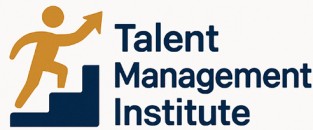
Understanding the Importance of New Leader Integration
Grasping the Significance of Supporting New Leaders
The transition into leadership roles presents a unique and critical stage in an organization's development. A sound understanding of this process, often called leader assimilation, is vital for both the success of the individual and the organization as a whole. When new leaders are effectively integrated, they can accelerate team effectiveness and bolster the organization's performance. Integrating a new team leader involves a well-structured assimilation process that prioritizes relationship building, trust, and clear communication among team members. As a facilitator, it's important to be proactive in creating an environment conducive to open dialogue and constructive feedback. The assimilation session often serves as a foundational step, helping transition the new manager into the existing team dynamics smoothly. This process can involve staged interactions, where the leader can interact with team members through formal and informal sessions. These interactions are designed to foster team learning and can be pivotal in understanding team expectations and dynamics. One must also acknowledge the time and attention needed to nurture this process. It’s not simply about leadership development but fostering an environment where every member, including the leader, is actively involved and invested in the collective goals of the organization. This inclusive approach allows for a seamless transition, enhancing overall team performance and development. Moreover, understanding the key questions that need to be addressed during the assimilation process is crucial. This can range from discussions about team goals to addressing specific performance expectations. These conversations should encourage a deeper understanding of individual roles in supporting the leader. For more insights on how to explore various opportunities within emerging fields, you can explore business internship opportunities for high school students, which can serve as a valuable resource for developing future leaders.Challenges Faced by New Leaders
Navigating Initial Obstacles as a New Leader
Taking on a new leadership role can be both exciting and daunting. Many leaders encounter various challenges during the initial stage of their role, which can hinder their effective assimilation within the organization. New leaders often face difficulties such as understanding team dynamics, adapting to the established culture, and meeting expectations from day one. The transition is often marked by high expectations and pressure to deliver results swiftly. Navigating these hurdles requires a thorough leader assimilation process and support from key facilitation channels. One core challenge is the ability to engage with team members and establish meaningful connections. Understanding team dynamics is crucial, as it sets the foundation for team effectiveness and overall performance. New leaders must also tackle the challenge of aligning their leadership strategies with the organization’s goals while managing diverse personalities within their teams. The assimilation process is further complicated by the need for immediate performance reviews and feedback sessions, which can place new leaders in a high-pressure environment. Feedback from team members is instrumental, but it requires guidance from experienced facilitators or a third party to ensure impartiality and constructive criticism. Moreover, the integration process is a learning journey, where leaders must constantly adjust their leadership techniques to match the needs of their organization. Engaging in business review discussions and focusing on leadership development are important steps in this process. Each session should be seen as an opportunity for growth and adaptation. To effectively manage these challenges, leaders can benefit from structured step team meetings and manager assimilation sessions. These sessions provide an organized forum to address key questions about leadership within the organization and promote understanding between leaders and their team members. Utilizing visual aids, like a flip chart, can enhance communication and set clear objectives. Overall, overcoming these challenges demands time, patience, and strategic planning. With a focus on development and a proactive approach, new leaders can navigate the obstacles that come with their roles. For those interested in exploring opportunities that allow for such growth and development, initiatives like business internships for high school students may provide valuable insights. Explore Opportunities that could inform understanding in leader preparation and readiness for overcoming initial challenges.Strategies for Successful New Leader Integration
Crafting a Comprehensive Onboarding Plan
Effective new leader integration begins with a well-structured onboarding plan. This plan should be tailored to the specific needs of the leader and the organization. It involves several key steps that facilitate the assimilation process, ensuring that the leader can quickly understand the team dynamics and organizational culture.
Facilitating Early Engagement
Engagement is crucial in the early stages of leader assimilation. Organizing an assimilation session can be an effective way to introduce the new leader to the team. During this session, the leader can share their vision and expectations, while team members can express their thoughts and questions. This open dialogue helps in building trust and sets the stage for effective collaboration.
Utilizing Third-Party Facilitators
In some cases, involving a third party can accelerate the assimilation process. A facilitator can guide the team through key questions and discussions that might be challenging to navigate internally. This external perspective can also provide valuable insights into team effectiveness and areas for improvement.
Implementing Leadership Development Programs
Leadership development is an ongoing process. Providing the new leader with access to leadership strategies and development programs can enhance their skills and performance. These programs should focus on understanding team dynamics, improving communication, and fostering a culture of continuous learning.
Regular Feedback and Performance Reviews
Feedback is a critical component of successful leader integration. Regular performance reviews and feedback sessions allow the leader to adjust their approach and align with the organization's goals. This process not only supports the leader's growth but also contributes to overall team performance.
For more insights on navigating the hiring landscape and enhancing workforce connectivity, consider exploring resources like this guide.
Role of Communication in Leader Assimilation
Communicating Effectively with Your Team
In the assimilation process, seamless communication plays a pivotal role, acting as a facilitator for new leaders looking to integrate into their roles smoothly. Ensuring open lines of communication can be the step that accelerates the overall leader assimilation. By understanding team dynamics and preferences, a new leader can better adjust their communication style to fit the organization's culture. Using diverse methods, a manager assimilation can take place through various channels such as open forums, feedback sessions, and regular check-ins. This approach not only enhances learning but also aids in understanding the team's perspectives. Having regular discussions with team members helps in addressing key questions that may arise during the initial stage.- Feedback Mechanisms: Regular performance reviews and business reviews for leaders allow the new leader to receive constructive feedback.
- Assimilation Sessions: Conducting a step-by-step session with the team can facilitate the manager assimilation process, creating opportunities for the new leader to ask questions and clarify expectations.
- Use of Tools: Utilizing tools like flip charts during meetings can enhance understanding and encourage active participation from team members.
- Third-Party Facilitation: Engaging an external facilitator might help in mediating initial sessions and ensuring that communication is efficient and productive.
Building Trust and Credibility
Fostering Trust and Establishing Credibility
In the assimilation process of a new leader, building trust and credibility with the team is crucial for smooth transition and effective leadership. A leader's ability to earn trust plays a pivotal role in team effectiveness and overall performance. This has to be a top priority during the early stage of leader assimilation.
A successful leader assimilation program should focus on understanding the dynamics of the team members and involve the leader in active learning processes. It's not only about the leader but also about how the team perceives leadership. Leaders must engage in open communication with their team, address key questions, and show genuine investment in the team's objectives.
Some effective practices in this regard involve:
- Facilitator-led sessions: A neutral third party can guide discussions and serve as a mediator in assimilation sessions, allowing open dialogue between the leader and team.
- Regular one-on-ones: This gives the team leader a chance to connect personally with each team member, offer feedback, and address individual concerns or questions.
- Team development activities: Organizing interactive activities can solidify relationships within the team, fostering a more cohesive work environment.
- Seeking feedback: Leaders should frequently seek and incorporate feedback to refine their leadership styles and strategies, thereby boosting trust and credibility.
- Addressing key focus areas: Managers should concentrate on fundamental areas like understanding business goals, improving communication, and promoting team collaboration to accelerate the assimilation process.
Effective manager assimilation doesn't happen overnight; it is a gradual process that relies heavily on trust and open communication. Successful leaders are those who continually work on establishing trust and credibility by being approachable and transparent. As a result, they pave the way for enhanced team effectiveness and a smoother transition into their roles.
Measuring Success in New Leader Integration
Evaluating the Success of Leader Integration
Measuring the success of new leader integration is crucial for ensuring that the transition is beneficial for both the leader and the organization. This evaluation process involves multiple dimensions, focusing on both qualitative and quantitative metrics.
Key Performance Indicators
To assess the effectiveness of the integration process, organizations should establish clear key performance indicators (KPIs). These KPIs might include:
- Team Performance: Evaluate changes in team productivity and effectiveness since the new leader's arrival.
- Feedback Mechanisms: Collect feedback from team members and other stakeholders to gauge the leader's impact.
- Leader's Development: Monitor the leader's progress in understanding the team and organizational culture.
Feedback and Continuous Improvement
Regular feedback sessions are essential. These sessions should involve both the leader and team members, facilitating open communication and addressing any concerns. A third party or facilitator can help ensure these sessions are productive and unbiased.
Tracking Assimilation Progress
The assimilation process is not a one-time event but a continuous journey. Organizations should track the leader's assimilation over time, focusing on:
- Understanding Team Dynamics: How well the leader understands and integrates with the team.
- Leadership Strategies: The effectiveness of the leader's strategies in aligning with organizational goals.
- Trust and Credibility: The level of trust and credibility the leader has built with team members.
Business Review and Adjustments
Conducting regular business reviews can help in identifying areas for improvement. These reviews should address key questions about the leader's impact on the organization and any necessary adjustments to the integration strategy.
Ultimately, the goal is to ensure that the leader's integration is a step towards enhanced team effectiveness and organizational success. By focusing on these areas, organizations can accelerate the assimilation process and foster a productive work environment.












